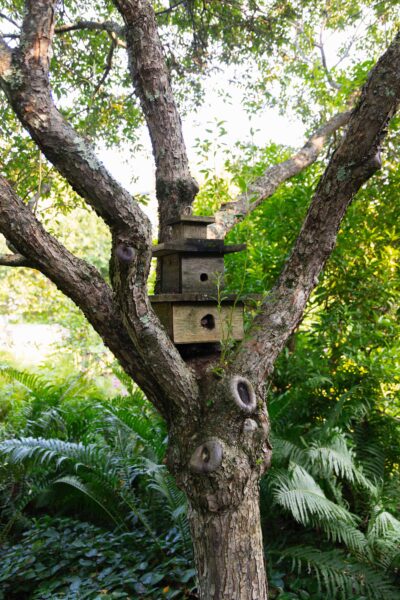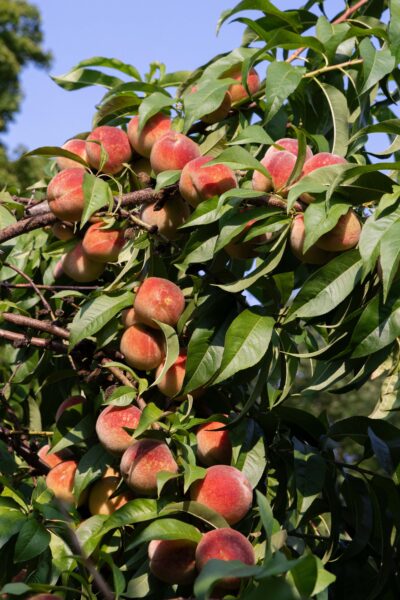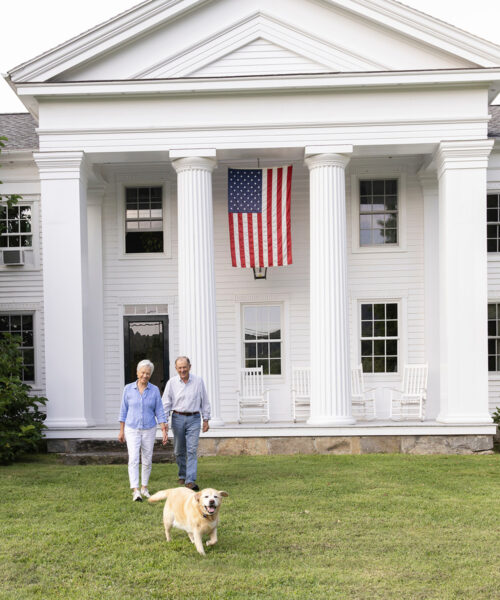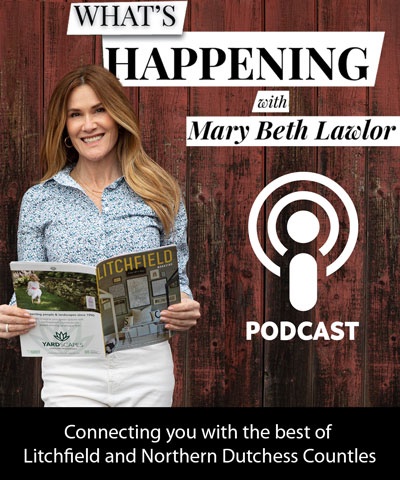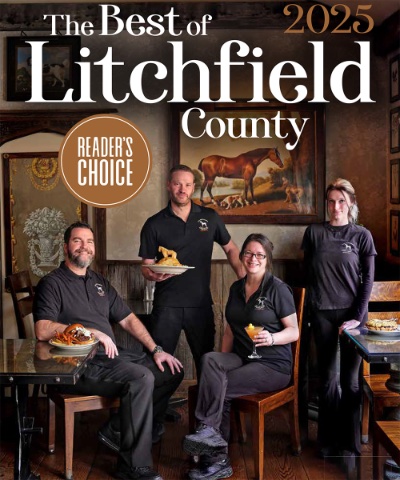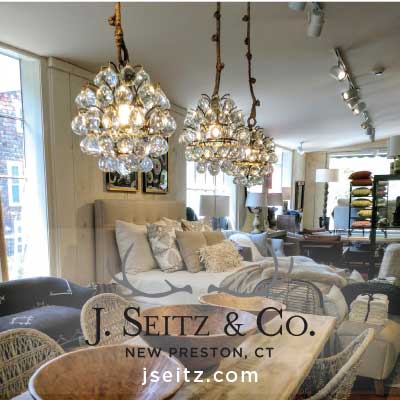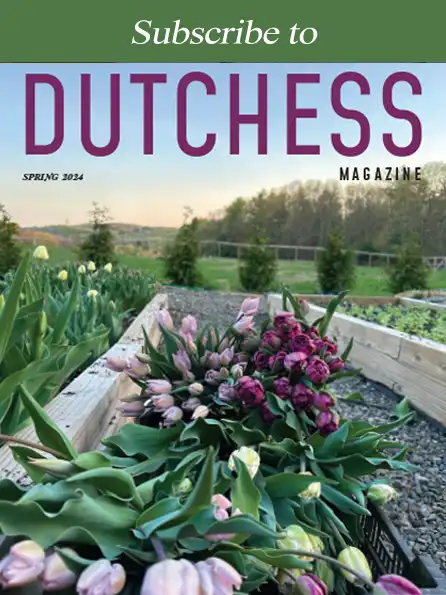July 15, 2025
By Jane Garmey
Photos by Rana Faure
It is almost 25 years since Debby and Barton Jones moved into their 1836 Greek Revival house in Cornwall. Known in local circles as “The White House” on account of its five imposing front pillars, the property had languished on the market for two years, as the house needed work. In addition, a freak tornado that swept through Cornwall four years earlier had demolished the garden, and felled almost every tree on the property. All that remained were 30 unsightly tree stumps and two small rock pools.
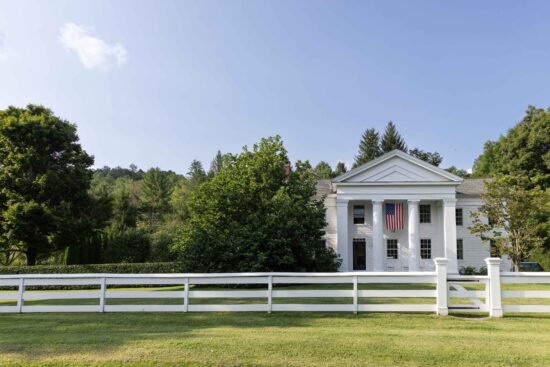
The Joneses were not, however, discouraged either by the condition of the house or the lack of a garden. Debby, an artist and designer by profession, decided to turn those dispiriting tree stumps into building blocks for a new garden, and chose the smaller pool to be the starting point for a series of pathways to wind around the stumps and, in so doing, to carve out a number of undulating flower beds.
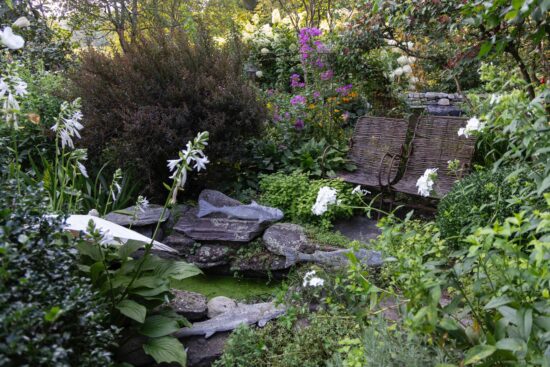
Initial plantings were determined by what would grow close to the stumps. Clematis worked well (two of Debby’s favorites are Etoile Violette and Guernsey Cream.) Since the land is on a gentle incline, she fashioned a set of stone steps to reach the highest point and planted a long row of arborvitae, now grown huge, along the far side of the slope.
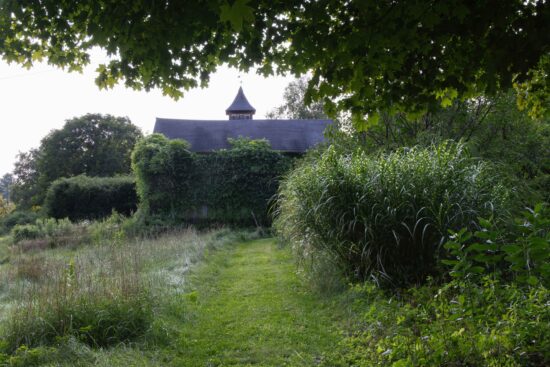
Over the years, the plants have grown and multiplied. What began as a way to disguise some unattractive tree stumps is now a secret garden full of labyrinth-like twists and turns—and a treasured refuge for its owners. Vertical interest is provided by three arbors laced with clematis and roses, four white posts rescued from the dump and topped with bird houses, and even a decorative antique French bottle drying rack—an impulse tag sale buy.
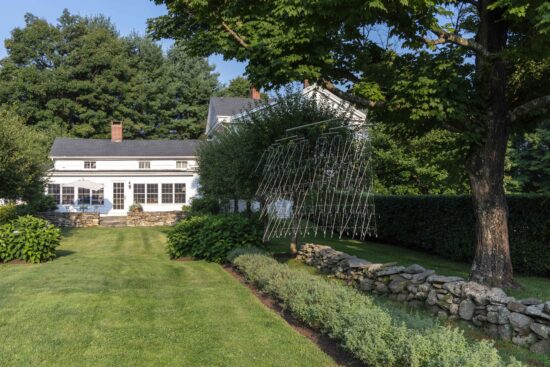
Interspersed with orbs of boxwood, the color palette is predominantly pastel, and in early summer pinks, lilacs, and whites predominate. By mid-summer this extends to yellows and purples with a profusion of delphiniums, foxgloves, iris, lilacs, alliums, peonies, salvias, lilies, and lady’s mantle. But what Debby treasures most are the roses, her particular favorites being Fantin-Latour, Félicité Parmentier, Souvenir de la Malmaison, and Constance Spry.
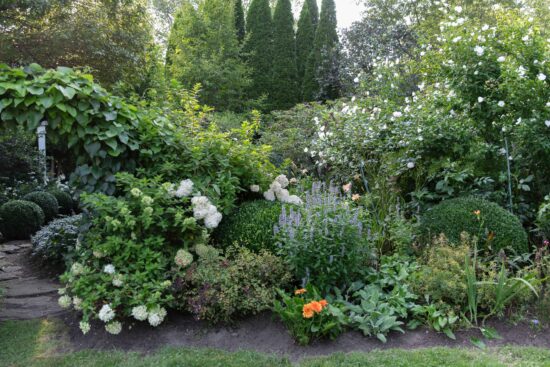
When she first began growing roses, Debby ordered 30 bare-rooted bushes from Canada. Unable to plant them right away, she left them in water and, to compensate for the delay, added far more than the prescribed amount of the grower’s recommended growing aid. “A horrible error,” she recalls. “For four years, they grew and grew and had enormous glossy green leaves but never bloomed.” Today, that is all past history, and the roses, still her passion, now bloom magnificently in early summer.
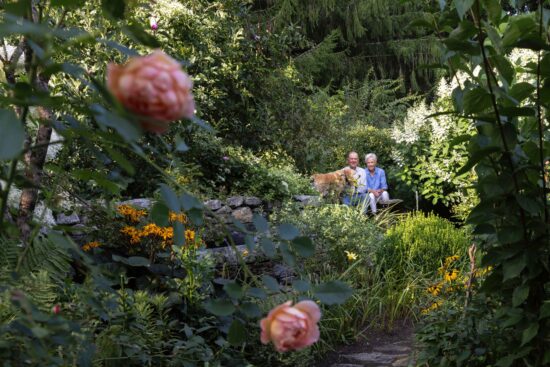
A few years ago, a deer fence was installed around the entire property, ingeniously hidden from view at the front of the house by being enmeshed within a hedge of cornus mas. Another inspired addition was an elegant crab apple allée that breaks up a large expanse of lawn and complements the formal style of the house. Also new is a kitchen garden outside the back door. Jubilantly planted with tulips every spring, it later sports dahlias, castor beans, and other jungly plants—their vibrant colors an intentional antidote to the delicate blooms of late spring and early summer.
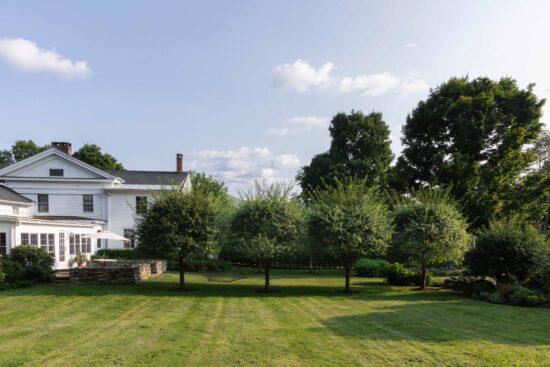
“I love English cottage gardens. No yuccas for me,” is how Debby defines her horticultural style. While Bart mixes compost, drags stones, and takes charge of heavy jobs, assuming the role, as he puts it, of the family mule, Debby takes the lead on color, scale, and design. A harmonious division of labor that makes for a pastoral and picturesque garden—and not a yucca to be seen!
